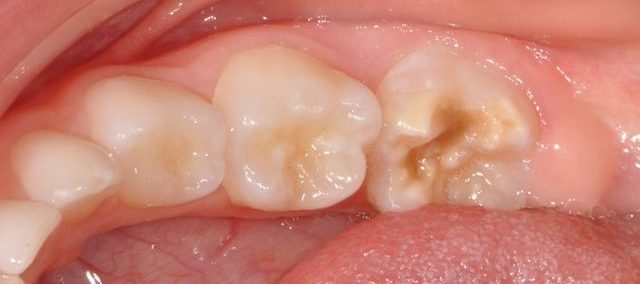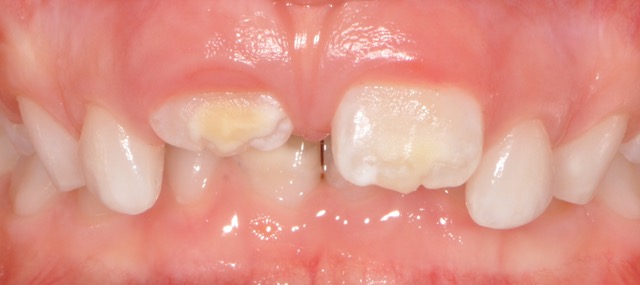
Why and how to treat them?
Dental stains
Increasingly common in our children, white to yellow or brown stains on permanent teeth, especially on the incisors and first molars, are a concern.
Parents are often alerted by the unsightly appearance of these stains, but this is not the only point to be considered: it is useful to investigate the issue further.
Why are these stains there and how should they be treated?
This dental malformation, which must be diagnosed quickly and differentiated from other dental problems, is in fact a hypo-mineralization of the enamel that occurs during the tooth formation phase before the tooth grows in the mouth. It particularly affects the first permanent molars and incisors and is thus called MIH: it can also affect the milk molars which can prevent future malformation of the permanent teeth.
Since the severity of this malformation can range from simple stains to covering the entire tooth, it is not the aesthetic aspect that is of most concern. These affected teeth have an increased sensitivity to cold, heat, sugar and acid. The enamel having this defect, the cavity attacks it more easily. The bonding of materials is more difficult and conventional anaesthesia is less effective in treating it.


What are the incriminating causes?
Several factors are pointed out: premature birth or low birth weight, recurrent infections at a young age including otitis and bronchitis, pollution, vitamin deficiency especially calcium and vitamin D, taking antibiotics...
What can be done? Specialized dental care for children
To protect these fragile teeth, it is essential to have impeccable dental hygiene. It is strongly recommended to limit snacking as much as possible and to avoid sweet and sour foods to reduce irritation. Fluoride varnishes and gels are offered by the dentist to strengthen the teeth and reduce their sensitivity. Depending on the size and severity of the lesions, temporary or permanent fillings may be considered. Regular follow-up with the dentist and new anesthesia techniques prevent aggravation and help find the right solutions for your child.


